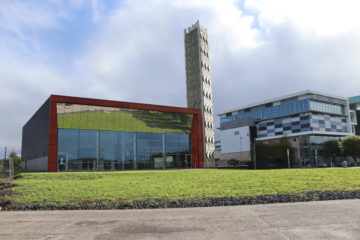Scots firm secures order for 1852 inspired Lord Kelvin technology to supply UK-first renewable heat network

Star Renewable Energy will design and build an innovative large scale heat pump system that will work with a solar energy installation to harvest solar energy to supply E.ON’s community energy centre in Cranbrook to the east of Exeter, with renewable heating and hot water.
The low carbon heating venture is the first of its kind in the UK to merge large scale heat pumps and solar thermal panels with contributions from solar photovoltaic and dedicated heat storage provision in a large scale district heating network.
The emissions-free, community-wide energy scheme secured funding from the Department of Energy Climate Change (DECC) and it is co-pioneered by energy company E.ON, the University of Exeter and technology provider SK Solar. The aim of the project venture is to improve the performance of heat networks, demonstrating how the combined technologies can replace or work alongside the existing combined heat and power (CHP) district heating scheme to provide lower cost and significantly lower carbon heating and hot water.
The demonstration project is one of nine schemes sharing a £6 million funding allocation from DECC. The investment will be used to blend Star’s award-winning heat pump technology with solar thermal panels to harvest energy directly from the sun. This innovation will drastically lower the environmental impact of warming local homes, businesses and buildings in Cranbrook and the surrounding area.
Dave Pearson, Director of Star Renewable Energy, a business of Star Refrigeration said: “The project is a new breed of heating solution and could offer Cranbrook carbon savings of up to 100% when compared to conventional gas boiler systems.”
The key innovation challenge for the project partners is the operation, control and optimisation of the dual technologies to supply one of the country’s largest new-build district heating systems with low carbon heat directly from sunshine. Engineers have risen to the task and created a strategy that, if successful, will deliver a secure heat source, as well as financial and CO2 savings.
As part of the project Star will install a high temperature 800C heat pump that will draw heat from approximately 2,000 square metres of ground-mounted solar thermal panels. The solar farm will produce hot water at 55C during the day and this will be boosted to 80C overnight when electricity is cheapest to allow the system to meet peak morning demand. A network of super-insulated underground pipes will eventually deliver the harvested heat to 3,500 new homes in Cranbrook, as well as 1.4 million square feet of Skypark industrial space, which is expected to provide over 6,500 new jobs.
It is expected that the Neatpump will provide local homes and businesses with a more sustainable source of heating and hot water which is also secure and reliable and.
Pearson said: “George Osborne talked about a ‘new settlement’. We believe harvesting heat from sunshine or rivers is the “new settlement” with energy – investing in heat pumps which is a solution that uses local jobs and skills and has far less reliance on imported fuels.
“Smarter heating solutions can be the catalyst to more jobs and a better environment. This recalibration of our relationship with energy is about far more than ’green‘. It is the triple pillars of sustainability; people, planet and profit. The Renewable Heat Incentive (RHI) support from DECC is bringing this opportunity to the masses and the support for big heat pump must continue. It is amazing that heat pumps – which were first spoken about in 1852 by Lord Kelvin in a lecture at Glasgow University –are only now coming to life in a commercial sense, but we have the skills and the need to make this a modern energy revolution.”
Tim Rook, Head of Design for Community Energy at E.ON, added: “It is fantastic to see the Government supporting innovative engineering that has the potential to change the low carbon heat landscape so dramatically. By combining these technologies and an advanced control system to select and manage multiple energy sources we have the potential to create a viable heat source that is truly renewable and independent of a fuel source.
“In years to come the integrated technology we are pioneering here could be replicated in existing and new-build district heating schemes across the country and would make a significant contribution to easing the impact on the environment which comes from domestic heating.”


